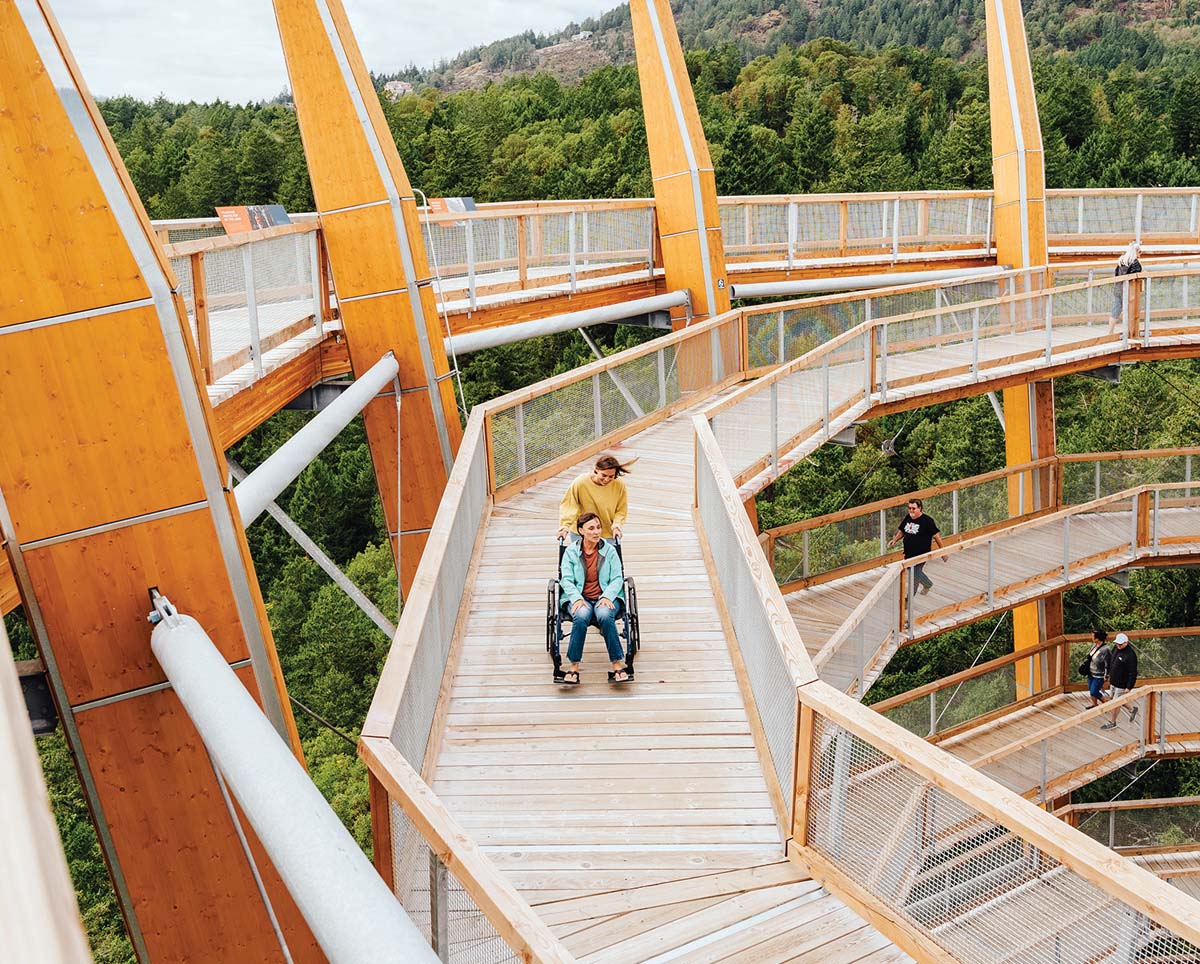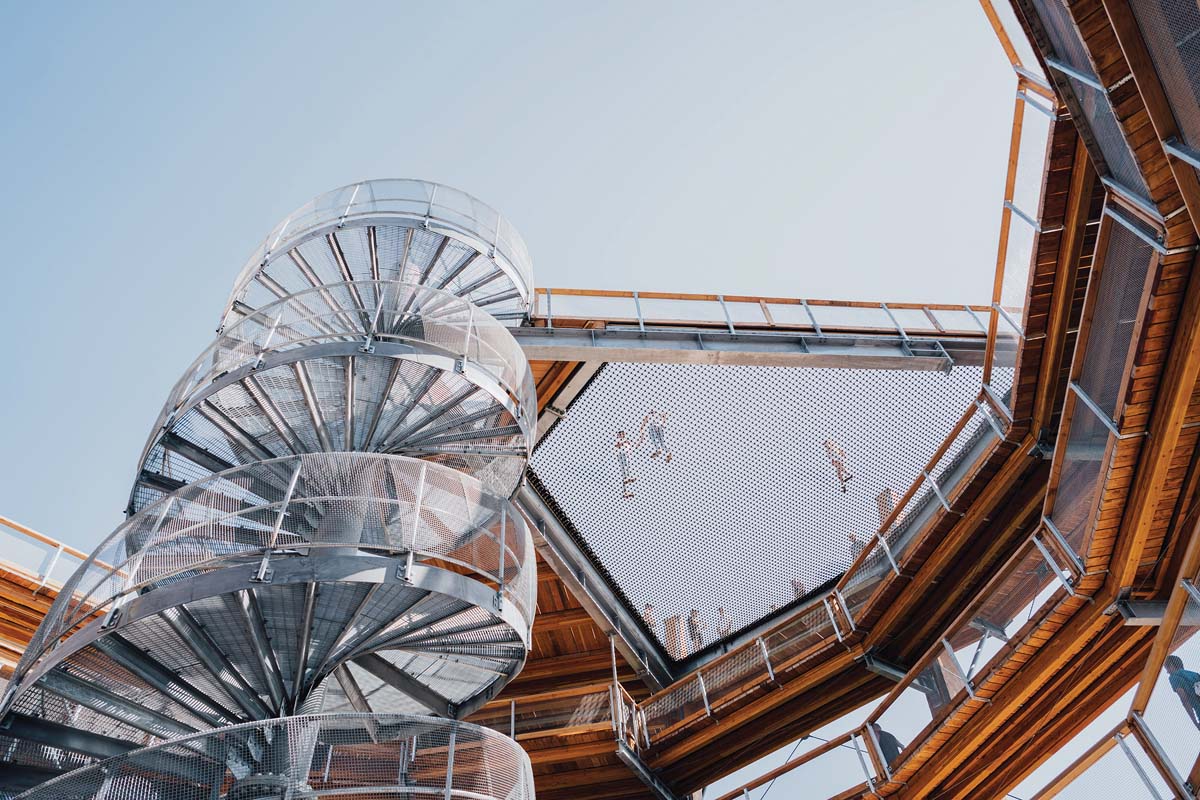Longview: Malahat Skywalk, Vancouver Island, BC
A new tourist attraction in Malahat First Nation is centered on sustainability, accessibility, a celebration of the natural world, mutual prosperity and land stewardship.

Last August, a new tourist attraction opened in Malahat First Nation, just north of Victoria, BC. The Malahat SkyWalk is a 600-metre walkway that spirals up over the treetops, leading to a viewing deck with panoramic views of nearby mountains and sea inlets.
Unlike recent lookouts such as New York City’s Vessel, the SkyWalk relies on a gentle ramp, rather than stairs, to elevate its visitors. “A ramp makes it into a more pleasant experience, whether you’re pushing a baby stroller, or you’re two years and you want to walk it yourself, or you have some mobility issues regardless of age,” says architect Brent Murdoch.

There’s a satisfaction in making your way up the tower through your own efforts—an experience that can’t be matched by an elevator or gondola. The design carefully calibrates that experience, starting with a pleasant arrival through the forest that leads you on a curated walking experience through the trees that lands partway up the tower. A modest five percent grade takes visitors up a widening spiral to the upper lookout. Along the way, they encounter a variety of play areas—slides, a water feature, a climbing net—creating appeal for anyone who visits. The structure’s impeccable construction and detailing are notable. So is the structure’s careful interaction with its landscape, from its considered placement on the site, to the choreography of views along the ramp.

The structure is also an inviting introduction to Malahat First Nation, on whose territory it sits. Silhouettes of local animals, and panels pointing out unique characteristics of flora and fauna accompany visitors on the way up, while didactic panels at the top highlight local birds and environmental factors that impact the region. Information on topics such as moon cycles and sea life blend Indigenous knowledge and Western science. Tourism on Indigenous lands—especially when presented with such generosity and craft—are a form of conciliation, creating places where knowledge and natural beauty can be shared between Indigenous and non-Indigenous peoples.
Mutual respect between Malahat First Nation and non-Indigenous team members characterized the entire design and construction process. The idea for the SkyWalk originated with non-Indigenous business partners David Greenfield and Trevor Dunn, experienced resort developers who led the creation of the Squamish Oceanfront and Sea to Sky Gondola near Whistler. They approached Malahat First Nation with the idea for the spiraling walkway, forming a win-win partnership that would yield an approachable tourist attraction while providing opportunity for the Nation to build its profile and capacity.

Coincidentally, Kinsol Timber, one of the West Coast’s leading manufacturers of large-scale timber structures, was located two kilometres down the road from the site. That allowed for the project to draw on local materials as well as local labour. “They were exceptional, and the logistical convenience was stratospheric,” says Murdoch.
“Malahat SkyWalk encompasses the foundational pillars for circular economic success. Environmentally sound, socially proactive, and honour of the lands, its people, and culture. The project sets the bar high for future development projects within Malahat’s traditional territory,” says Angela van den Hout, the Nation’s Director of Economic Development.
From the top of the SkyWalk, it’s clear that this project has hit the mark in a multitude of ways. Two worlds—Indigenous and non-Indigenous—have come together to create a landmark centered on sustainability, accessibility, a celebration of the natural world, mutual prosperity and land stewardship. It’s a hopeful place that allows your mind to contemplate many expansive concepts related to land, water and sky as you travel towards an inspiring view of the inlet.
